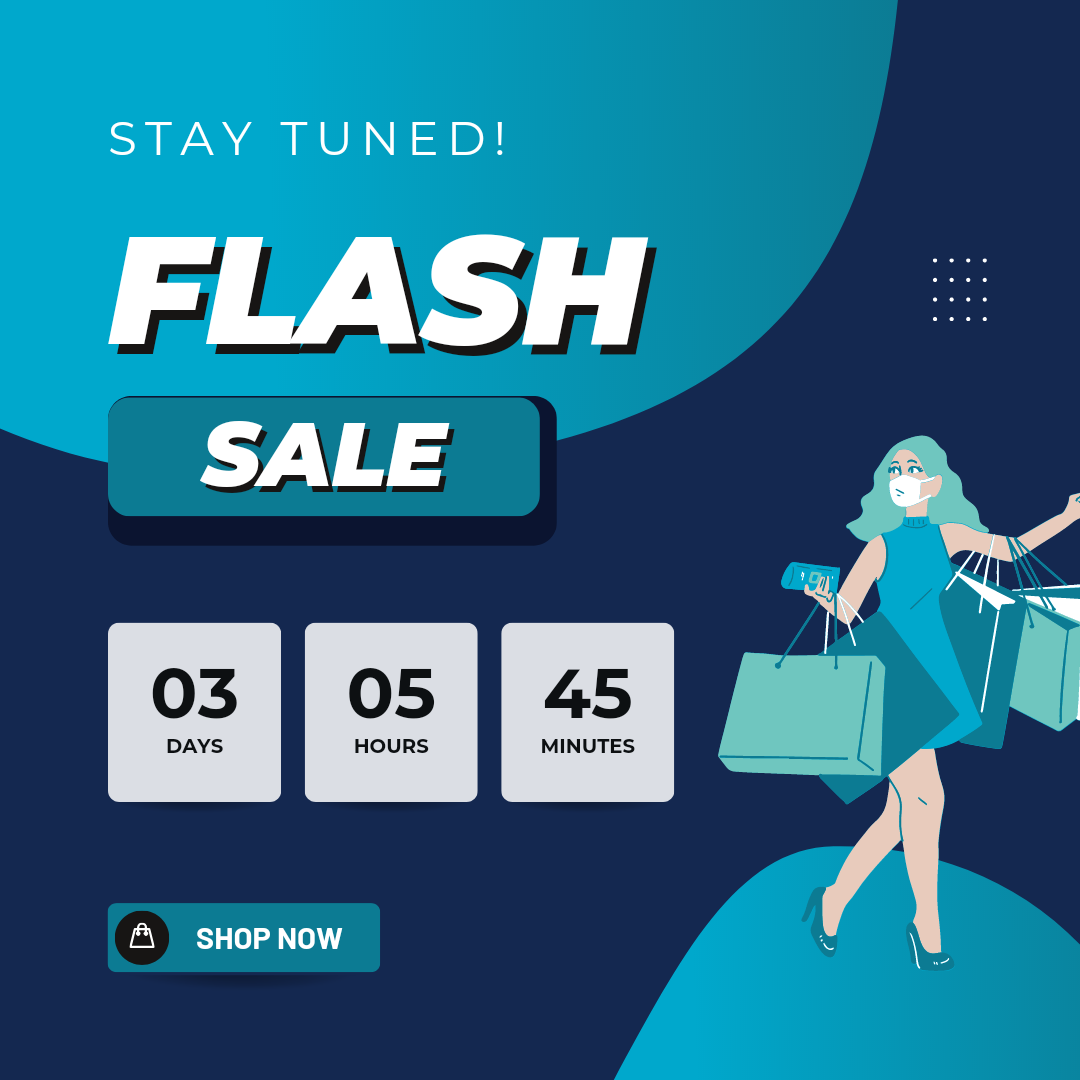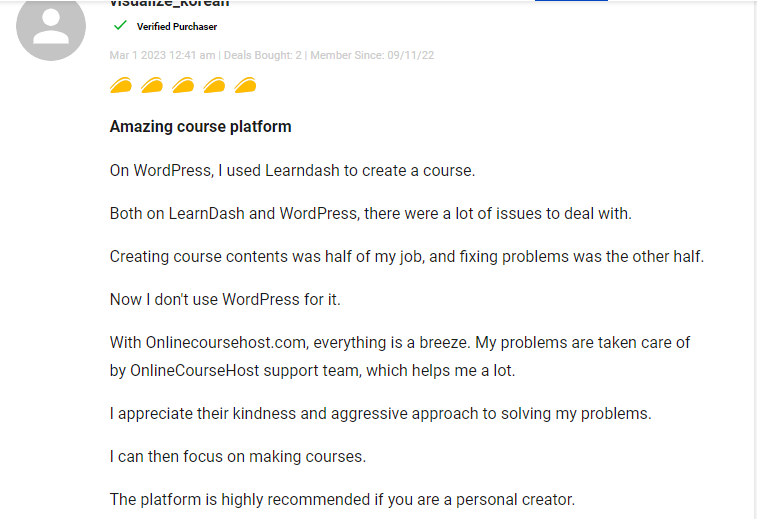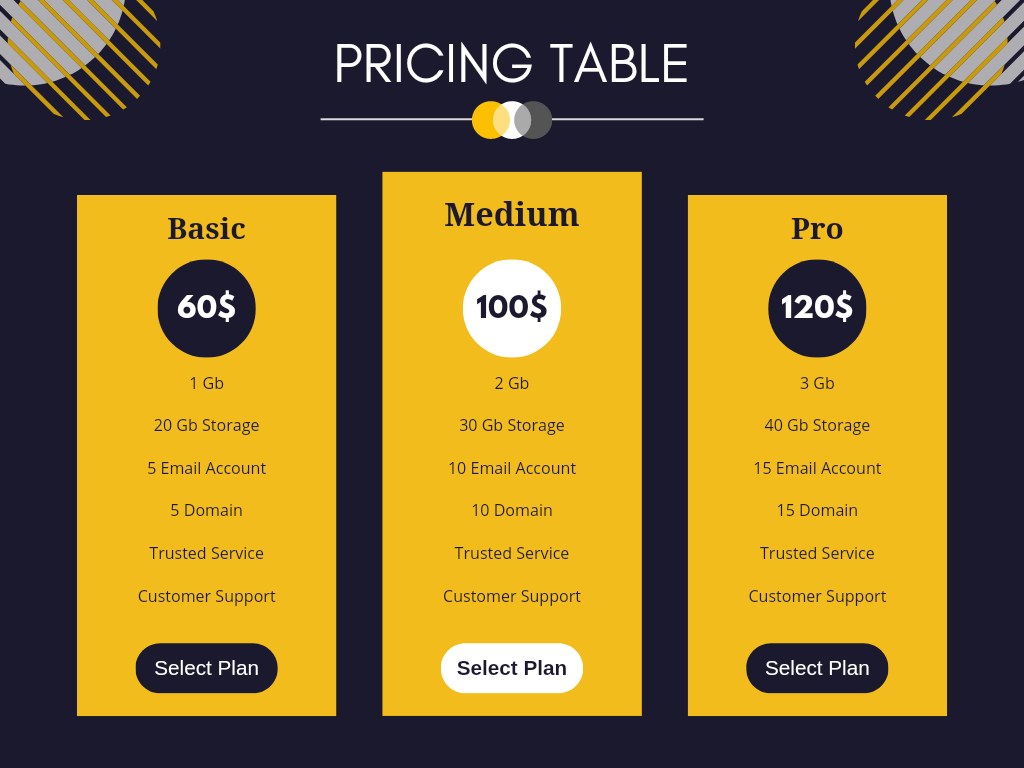10 Proven Psychological Tricks to Maximize Your Online Course Sales
 Platform Review
Platform Review

Maximize your online course sales with these 10 psychological selling tricks. Learn how to use urgency, anchoring, reciprocity, and more to boost your sales and revenue as an online course creator.
You've put in the hard work of creating an online course packed with incredible value. However, getting people to actually enroll and buy your course is a whole different challenge.
Even the best courses can struggle to make sales if the marketing doesn't tap into the right psychological drivers.
If so, you're not alone. As an online course creator, I've been in your shoes, and I understand how frustrating it can be.
The truth is, purchasing decisions are driven as much by emotional factors as by rational ones. So, while you want to highlight the quality content and benefits of your course, you also need to leverage proven psychological principles that motivate people to take action.
Whether you're launching a brand new online course or looking to reinvigorate sales of an existing one, the psychological tricks shared in this post will be incredibly valuable additions to your marketing arsenal.
Let's dive in!
So, what are the 10 psychological tricks to boost your online course sales?
- Create a Sense of Urgency
- Use Social Proof
- Trigger Emotions
- Offer Value-driven Pricing
- The Framing Effect
- Use Reciprocity
- Positioning
- The Decoy Effect
- Upselling and Cross-selling
- Charm Pricing
These psychological selling hacks are the key to maximizing your online course sales and achieving the success you deserve.
I'll expand on each of them in the rest of this post. Whether you're just getting started in the world of online learning or you're looking to take your sales to the next level, keep reading!
You can also check out all the free guides available at the Course Creator Academy by clicking on the Academy link on the top menu.
Without further ado, let's cut to the chase!
Create a Sense of Urgency
One of the most powerful psychological hacks to boost your online course sales is the sense of urgency.
People who want to buy often need that little kick in the butt to take action NOW. But, by employing a sense of urgency in your sales copy or marketing message, you can compel them to take action and make an immediate purchase.
When people feel like they might miss out on an opportunity, they're more likely to act quickly. That's why this psychological selling hack works so well.
There are several ways to create a sense of urgency in your marketing messages. One effective strategy is to offer limited-time discounts or promotions.
For example, you could run a 24-hour flash sale, or add a countdown clock to your website to highlight the deadline for a special offer.
Here's what I'm talking about.

Another way to create a sense of urgency is to emphasize the scarcity of your course. You could say that your course is only open to a certain number of students, or that it's only offered once a year.
This can create a fear of missing out (FOMO) and motivate your customers to act before it's too late.
By using these techniques to create a sense of urgency, you can increase the perceived value of your course and persuade more potential customers to buy.
Keep in mind, however, that urgency and scarcity are only effective if people believe you. So be sure to keep your word.
Use Social Proof
Have you ever been persuaded to try something new after hearing about it from others?
That's the power of social proof, a psychological phenomenon where people are influenced by the actions or opinions of others, especially those who appear similar to them.
Most times, people don't buy because they don't want to take risks. But show them enough proof, and their doubts will vanish!
In other words, social proof = safety
One way to use social proof to boost your sales as a course creator is to display positive customer reviews and testimonials on your website and social media channels in a way that addresses objections.
This testimonial from OnlineCourseHost.com is an excellent example

Studies have shown that 49% of consumers trust reviews as much as personal recommendations from friends and family members, while 91% of 18 to 34-year-olds trust reviews online just as much as personal recommendations.
Also, you can display the number of students who have enrolled in your course or the number of followers you have on your social media channels to establish authority.
Another way to use social proof is by partnering with people your audience knows and trusts. These could be influencers or thought leaders in your industry.
Think about it. Social proof is always nice. But social proof from someone you know and trust will make you reconsider, even if you said you'd never do it again.
The same is true for your target audience as a course creator. Someone they know and trust can persuade them otherwise. And you can leverage their authority and influence to increase your credibility and trustworthiness, resulting in more conversions and sales for your online course.
Trigger Emotions

Knowing how to trigger emotions can be one of your most powerful assets as a course creator.
The reason is simple: people buy purely based on emotions and then justify it with logic.
To maximize your online course sales, you need to tap into your potential customers' emotions and use them to your advantage. You can target emotions like success, envy, greed, shame, jealousy, etc.
One sure way to do this is by using storytelling in your marketing messages. Write a story that strongly conveys any of these emotions or feelings.
This is because humans relate to feelings. Stories command and keep attention. They also remove resistance and persuade better.
You could, for example, tell a transformational story about how your course has helped others achieve their goals or overcome challenges.
This allows potential customers to emotionally connect with your course and see themselves as the next success story.
Another way to trigger emotions is to use power words in your marketing messages.
Power words are emotionally charged words that can evoke a strong response in your potential customers.
Words like "new," "free," "life-changing," "only," and "predictable," for example, can build excitement and anticipation for your course.
By triggering emotions in your potential customers, you can create a strong connection with them and increase the likelihood that they will make a purchase.
Offer Value-Driven Pricing
Pricing is an important consideration in the decision-making process for potential customers. As a course creator, how you price your course can either attract or repel students.
To maximize your online course sales, you can offer value-driven pricing that makes your course seem like a great deal.
One way to offer value-driven pricing is to use the "Price anchoring" technique. This involves offering a higher-priced option alongside a lower-priced option to make the lower-priced option seem like a better value.
For instance, you could offer a basic course package for $99 and a premium package for $199. Even if most customers choose the basic package, the premium package makes the basic package seem like a great deal.
Here's how OnlineCourseHost.com uses anchoring.

Bundling your course with other products or services is another way to provide value-driven pricing.
You could, for example, include a coaching session or a free e-book with the purchase of your course. This raises the perceived value of your course and makes it more appealing to prospective students.
You can also offer a money-back guarantee or a free trial period to reduce the risk for potential students. This reassures them that they will not be stuck with a product that does not meet their needs.
The Framing Effect
Framing is one of the most critical aspects of marketing because it has a significant impact on how potential customers perceive your product or service.
A course creator who understands framing would easily outsell a world-class course creator.
Essentially, framing is the way you present your offer to your target audience, and it can make a huge difference in how people perceive it. An offer is only as good as its perceived value.
Take, for example, the following prices for enrolling in a mastermind program.
- Less than $1/day
- $25/month
- $300/year
They look different. But they're exactly the same. And guess what? People will react differently to them.
Another example of framing as a course creator is emphasizing the unique benefits of your product or service.
For example, if you offer a fitness program, you could frame it as a way to "get in the best shape of your life without giving up your favorite foods."
This framing emphasizes the program's benefits while also addressing common concerns that potential customers may have.
In summary, the framing effect is about shining the right light on the right part of your offer at the right angle. Make it creative, create more curiosity, and emphasize benefits and unique value proposition.
This will increase the likelihood of potential customers taking action and becoming loyal customers.
Use Reciprocity

Have you ever felt the need to return a favor done to you before?
That's the power of reciprocity. It is a powerful psychological principle that works most of the time. This principle suggests that people feel obligated to give back to those who have given to them first.
As a course creator, this means that customers are much more likely to respond positively to your offer if you give them free value upfront.
One way to use reciprocity in your marketing efforts is by offering something of value for free to potential customers. This could be a free e-book, webinar, or mini-course that provides helpful information related to your course topic.
Giving something of value creates a sense of goodwill and establishes you as an expert in your field.
Another way to use reciprocity is by offering a discount or special offer to customers who have previously purchased from you. This not only rewards existing customers for their loyalty, but also encourages them to make more purchases in the future.
However, it's important to note that when using reciprocity, you should always offer something of genuine value to your customers.
If you offer something that is low-quality or does not deliver on its promises, you risk damaging your relationship with potential customers and harming your brand's reputation.
By using the principle of reciprocity in your marketing efforts, you can build a strong relationship with potential customers, increase brand loyalty, and ultimately drive more sales for your online course.
Positioning
Positioning is another proven psychological selling tactic that can help businesses stand out in a crowded marketplace and attract more sales.
As a course creator, positioning is how you differentiate your brand to show your ideal customer why they need you, when they need you, and how you'll transform their lives.
To effectively use positioning, you must first identify your unique selling proposition (USP) - what makes your course stand out from others.
You should not be just another guy in your niche; instead, you should be the guy who does one thing better than everyone else.
This could be a specific topic you cover, a teaching style that sets you apart, or a unique feature or benefit that no other course provides.
Once you've identified your USP, use it to position your course in a way that appeals to your target audience. This could be emphasizing certain aspects of your course, such as benefits.
Another strategy is to establish your course as the go-to resource in your niche.
You can accomplish this by producing high-quality content that highlights your expertise, leveraging social proof through customer reviews and testimonials, and collaborating with influencers or other industry leaders to increase your visibility.
This makes it easy for people to remember you because you've already positioned yourself as an authority.
Your product idea can be stolen, your offer can be copied, and even your funnel can be hacked. But nobody can copy the relationship and positioning you have with your audience.
The Decoy Effect
Another powerful psychological selling trick for course creators to influence buyer decisions and increase sales is the decoy effect.
It involves introducing a third pricing option (the "decoy") strategically to make the other two options very attractive in comparison. This effect can be used in various ways to increase sales.
For example, suppose you're selling an online digital marketing program with only two options: a basic package for $60 and a pro package for $120. Introduce a third option: "a medium package" for $100.
Something like this.

Let me explain why:
The price difference between the basic and medium packages is big enough for someone who wants the basic package to not feel like they overpaid for it.
And for those who want a higher package? It's a no-brainer because the difference is just $20 between the medium and pro packages.
This way, the buyer feels like he has beaten the system and pays an extra $20 to get the pro over the medium package. Isn't that interesting?
To spice things up even more, you could say that the pro package is usually $150. But today, you're offering a $30 discount.
This would make the pro package seem like a much better value in comparison and everyone would buy it.
By using the decoy effect, you can influence your customers' perception of value and increase the likelihood of them choosing your higher-priced option.
However, it's important to use this strategy ethically and avoid deceiving your customers. Make sure that each option you offer provides genuine value and meets the needs of your target audience.
Upselling and Cross-Selling
As an online course creator, each product you sell should solve a problem. But also, it can create a new one.
This is where upselling and cross-selling come into play.
Upselling involves offering a higher-priced version of your course with more features or benefits. I.e. you can upsell the solution to a new demand created by a product you sold, whereas cross-selling involves promoting related courses or products to your customers.
Here's what I mean:
If you convince a customer who bought a course on marketing to buy a more comprehensive package that includes coaching or consulting, that's upselling. But if you convince them to buy a course on social media marketing to complement the marketing course, that's cross-selling.
By using these psychological selling tricks, you can maximize your online course revenue per customer and also provide additional value to your customers.
However, you should use these techniques strategically to avoid coming across as pushy or aggressive. Make sure the upsell or cross-sell is relevant and valuable to the customer, and be transparent about the additional costs.
Charm Pricing

Have you ever wondered why so many course prices end in a 9?
It's not a coincidence; it's a strategy based on the charm pricing technique or the magical number 9.
This psychological pricing strategy capitalizes on our tendency to perceive prices ending in 9 as more appealing and affordable than prices that do not.
A course priced at $99, for example, may appear more appealing than one priced at $100, even though the difference is just one dollar. It's because our brains process information subconsciously, and the first digit in a price tends to have more impact on our perception than the last.
But the magic of charm pricing doesn't end there. This technique can also be used to create the illusion of a bargain.
For instance, you can display the original price of your course as $199 and then discount it to $99. This creates the impression that the course is a steal at its discounted price, and customers are more likely to buy.
However, the charm pricing technique isn't suitable for every product or service. It works best for lower-priced items or when the price difference is significant. It may not be as effective for higher-priced courses where customers are likely to take more time to evaluate the value of the investment.
Ultimately, by using the charm pricing technique or the magical number 9 in your pricing strategy, you can increase the perceived value of your course, make it more appealing to potential customers, create a sense of urgency, and drive more sales.
Conclusion
As a course creator, it's important to understand the psychology behind buying behavior and use it to your advantage.
By applying these psychological selling tricks, whether it's creating a sense of urgency, triggering emotions, offering value-driven pricing, the decoy effect, and so on, you can create a more persuasive offer, increase the perceived value of your course, and ultimately increase sales.
Remember, the key is to use these hacks ethically and honestly. Don't manipulate your audience or create false scarcity. Instead, focus on creating a valuable course that truly helps people, and use these psychological principles to communicate that value effectively.
So don't be afraid to experiment with these techniques and find what works best for you and your audience. With a little bit of creativity and strategic thinking, you can take your online course sales to the next level.
It goes without saying that you will also need an excellent course hosting platform to make this happen. Look no further if you're looking for a hosting platform that provides the best value for your money.
OnlineCourseHost.com is your best bet!
The platform has powerful features that allow you to effectively create, promote, and sell your online courses. Also, its professional sales page and built-in lead-generation tools will help attract more course sales.
Even better, it is super affordable and easy to use, as no design or coding skills are required to get started.
If you need more information to grow your online course business successfully, you should check out the Course Creator Academy.
You will find everything you need to become a successful online course creator all in one place for free.
To get notified when new content is available here at the Academy, you can subscribe here to our weekly newsletter:
If you are looking to ask any questions on online course creation, you can reach me here on my Facebook group:
Join the Course Creator Academy Facebook Group
Ready to learn how to launch your first course on OnlineCourseHost.com? Here are the helpful guides for you to check out:
- Best Online Course Platforms (Ultimate Guide)
- How To Create An Online Course (In 15 Super-Practical Steps)
- How To Choose An Online Course Topic That Sells
- How To Record And Edit Your First Online Course
- Affordable Online Course Equipment - Complete Practical Guide
- How To Hire An Online Course Team
- The Ultimate Online Course Launch Checklist
- How To Create The Perfect Online Course Sales Page
- Create A Powerful Brand For Your Online Courses (In 5 Steps)
- How To Sell Online Courses? The Ultimate Guide
- How To Promote Your Online Course - Complete Guide
I hope you found this post helpful. Let me know in the comments below what other topics you would like me to cover or any questions you have.
Thanks for reading… and enjoy the course creation process! 😉
Course Creators Academy, a community by OnlineCourseHost.com
Founded by Vasco Cavalheiro
Online Course Creator








 Start Here
Start Here Course Creation Journey Step by Step
Course Creation Journey Step by Step  Course Creation Software Reviews
Course Creation Software Reviews Online Course Marketing
Online Course Marketing Course Creation Tips & Tricks
Course Creation Tips & Tricks Course Equipment
Course Equipment Online Course Marketplaces
Online Course Marketplaces Revenue Reports
Revenue Reports Best Practices
Best Practices Frequently Asked Questions
Frequently Asked Questions Platform Reviews
Platform Reviews